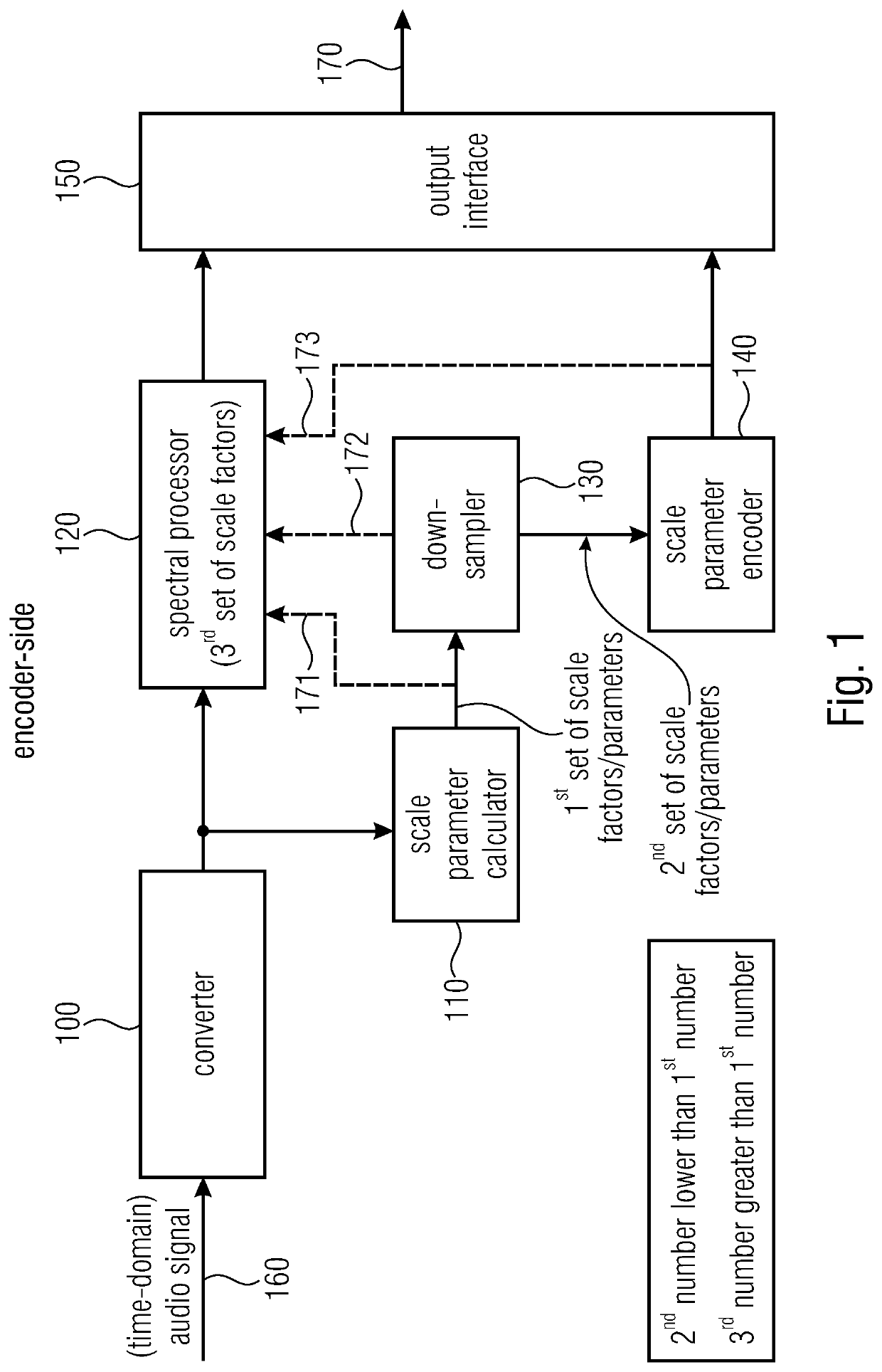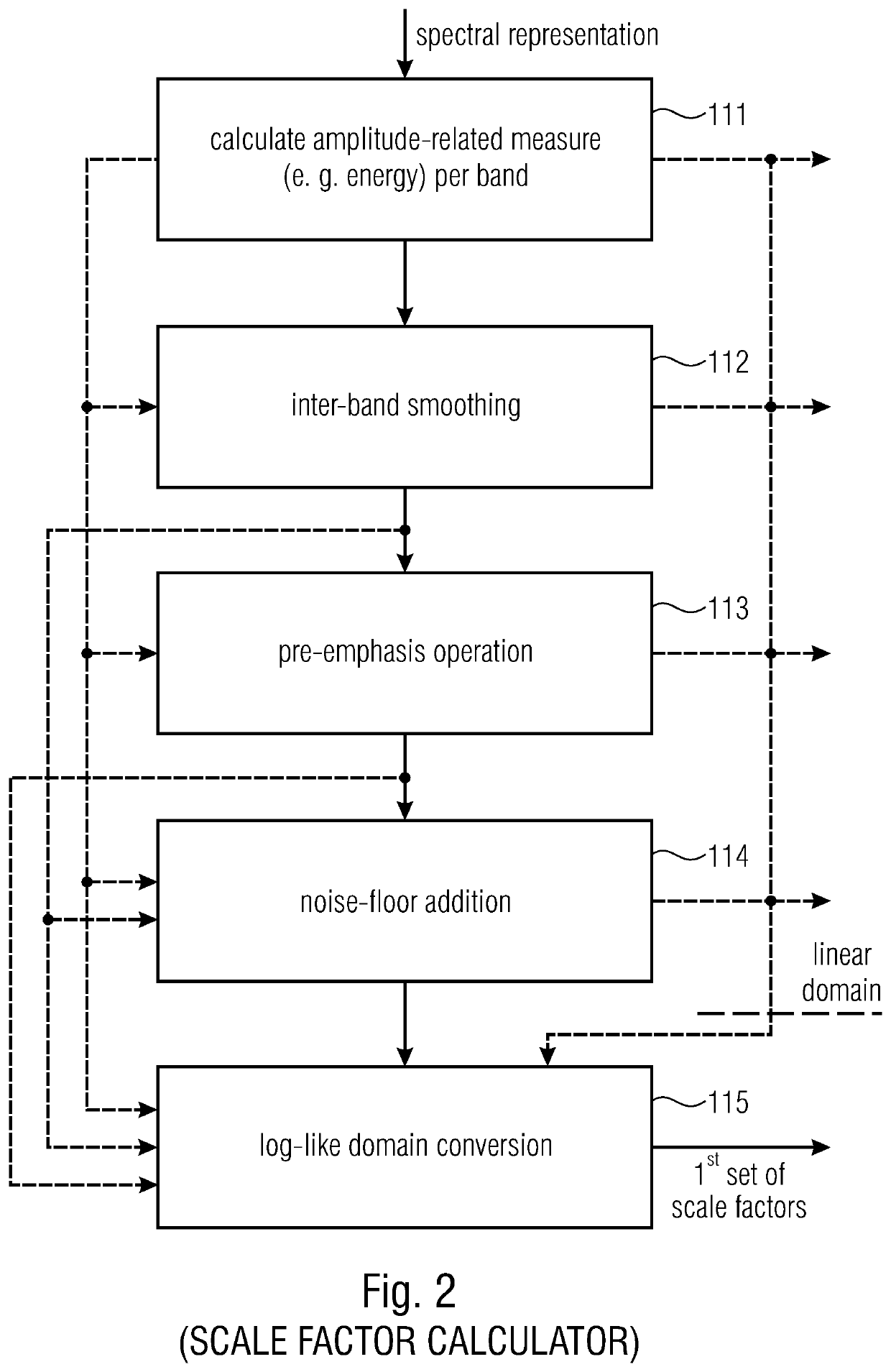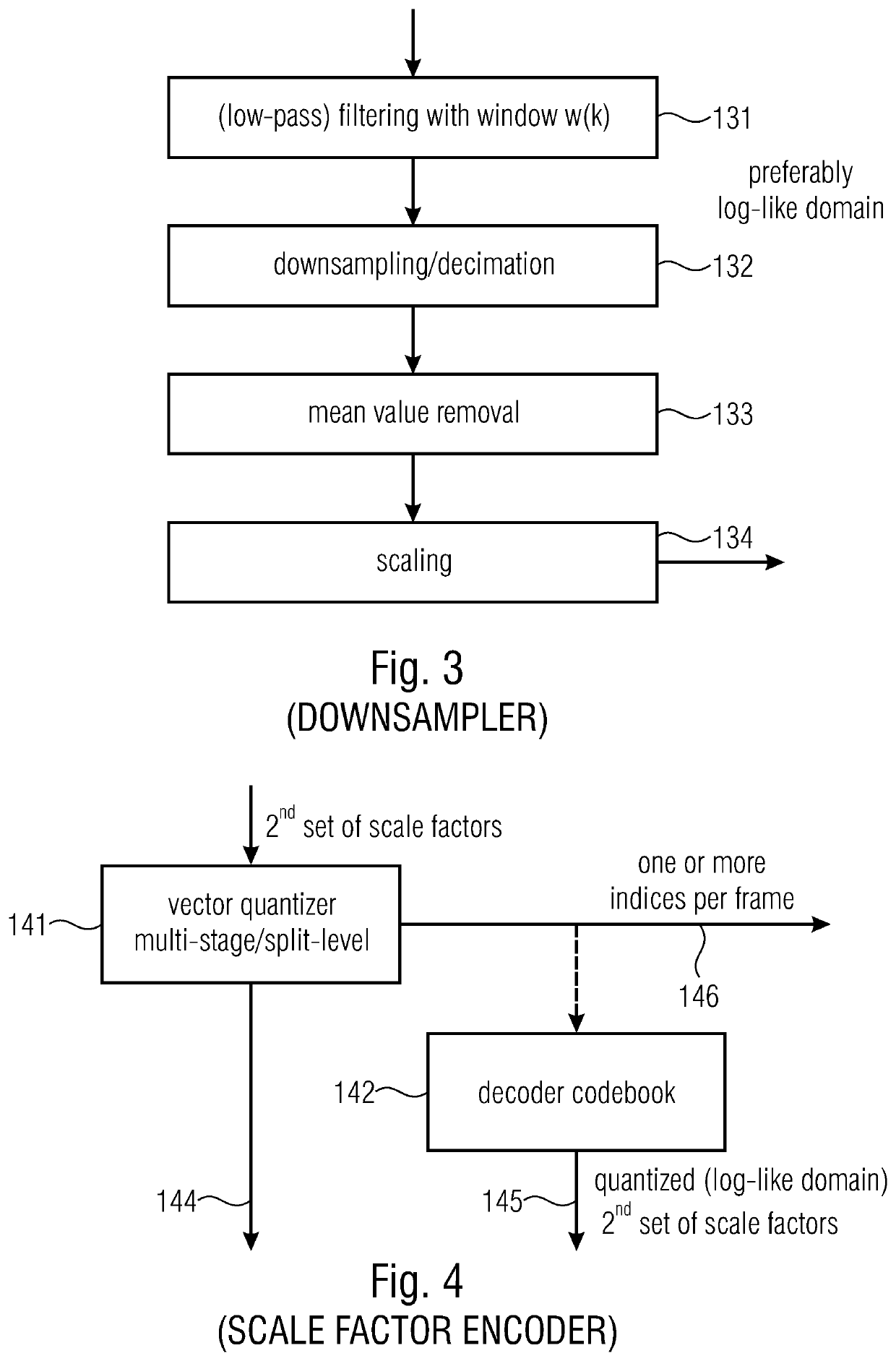Apparatus and method for encoding and decoding an audio signal using downsampling or interpolation of scale parameters
a technology of scale parameters and audio signals, applied in the field of audio processing, can solve the problems of limiting the frequency scale of noise shaping to be linear, the approach has also some drawbacks, and the problem of becoming a problem, and achieves the effect of small complexity, high complexity, and high complexity
- Summary
- Abstract
- Description
- Claims
- Application Information
AI Technical Summary
Benefits of technology
Problems solved by technology
Method used
Image
Examples
Embodiment Construction
lass="d_n">[0047]FIG. 1 illustrates an apparatus for encoding an audio signal 160. The audio signal 160 advantageously is available in the time-domain, although other representations of the audio signal such as a prediction-domain or any other domain would principally also be useful. The apparatus comprises a converter 100, a scale factor calculator 110, a spectral processor 120, a downsampler 130, a scale factor encoder 140 and an output interface 150. The converter 100 is configured for converting the audio signal 160 into a spectral representation. The scale factor calculator 110 is configured for calculating a first set of scale parameters or scale factors from the spectral representation.
[0048]Throughout the specification, the term “scale factor” or “scale parameter” is used in order to refer to the same parameter or value, i.e., a value or parameter that is, subsequent to some processing, used for weighting some kind of spectral values. This weighting, when performed in the li...
PUM
 Login to View More
Login to View More Abstract
Description
Claims
Application Information
 Login to View More
Login to View More - R&D
- Intellectual Property
- Life Sciences
- Materials
- Tech Scout
- Unparalleled Data Quality
- Higher Quality Content
- 60% Fewer Hallucinations
Browse by: Latest US Patents, China's latest patents, Technical Efficacy Thesaurus, Application Domain, Technology Topic, Popular Technical Reports.
© 2025 PatSnap. All rights reserved.Legal|Privacy policy|Modern Slavery Act Transparency Statement|Sitemap|About US| Contact US: help@patsnap.com



